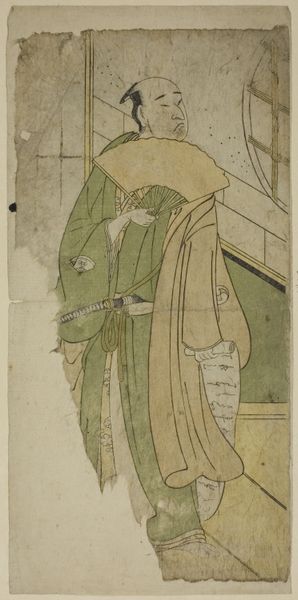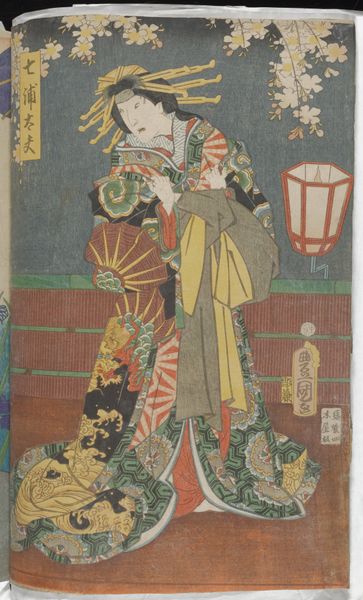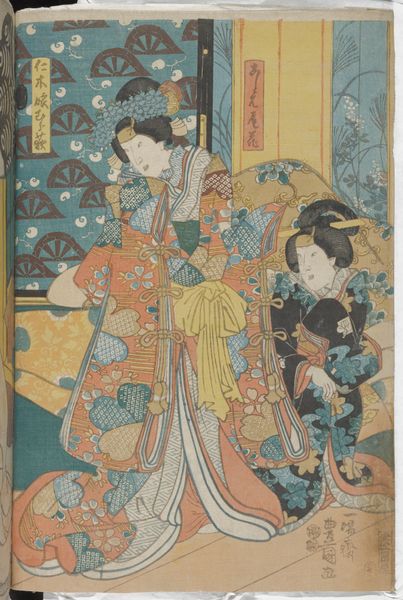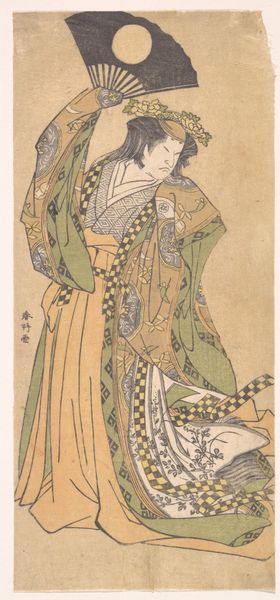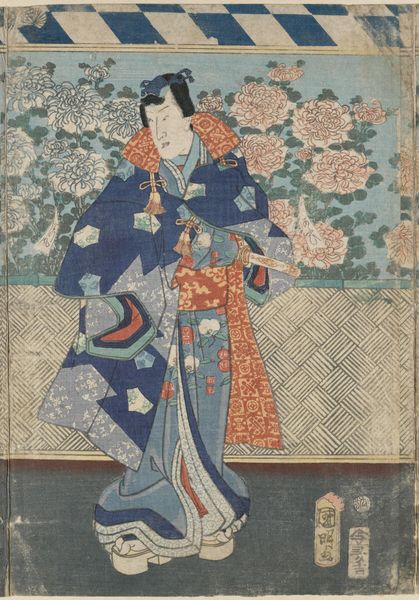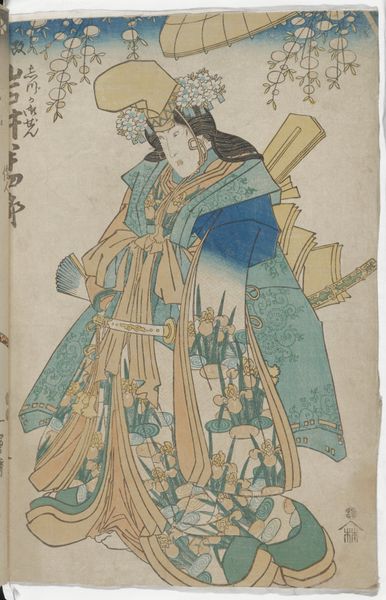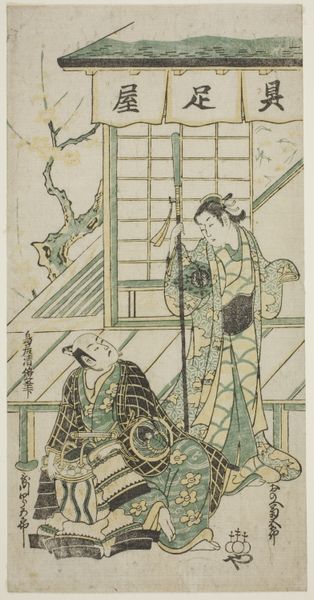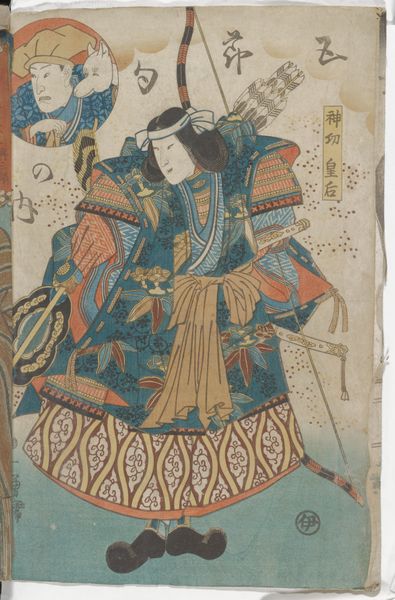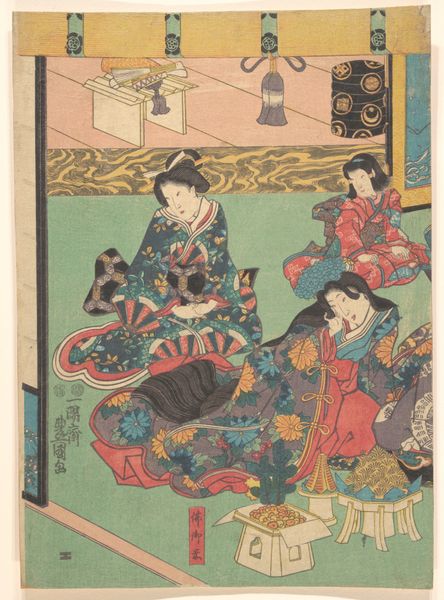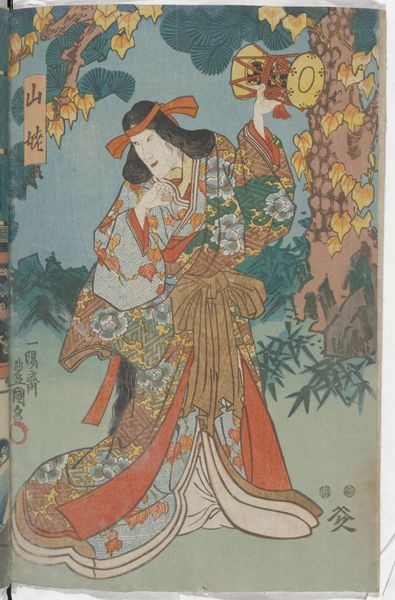
Scene with Kinshōjo from the Kabuki Play -Kakusenya Kassen- Possibly 1850 - 1855
0:00
0:00
mixed-media, print, ink
#
mixed-media
#
narrative-art
# print
#
asian-art
#
ukiyo-e
#
figuration
#
ink
#
mixed media
Dimensions: 14 3/8 × 10 1/16 in. (36.5 × 25.5 cm) (image, sheet, vertical ōban)
Copyright: Public Domain
Editor: Here we have "Scene with Kinshojo from the Kabuki Play - Kakusenya Kassen-," a mixed-media print by Utagawa Kunisada, possibly created between 1850 and 1855. There's a sense of theatrical drama, maybe even tension in the stillness of the central figure juxtaposed against the stylized waterfall. How do you interpret this work? Curator: The print operates within a vibrant intersection of art, theatre, and social commentary. Kabuki was a popular form of entertainment, but it also functioned as a space to critique and negotiate power structures, especially regarding gender roles and social hierarchies. Notice Kinshojo's attire. How does it perform ideas of class or status? Editor: Well, it looks pretty opulent! All the layering, the colors... It speaks to a position of privilege, right? Curator: Precisely. But also, consider the male actors who often played female roles in Kabuki. This print, and the Kabuki play itself, becomes a space to explore the performativity of gender and the subversion of social norms. The waterfall, juxtaposed with the figure, evokes themes of ephemerality and the constant flux of life. In what way do you feel that image speaks to themes of identity or social justice? Editor: I never considered the interplay between identity and setting here; that juxtaposition definitely gives me a different view. Curator: Exactly. Kunisada wasn't merely depicting a scene but inviting the viewer to question the constructed nature of identity within a specific historical context. Editor: That’s fascinating! Thanks to your analysis, I can appreciate how the work operates on so many different levels and challenges my initial perception. Curator: And for me, this discussion reinforces the idea that art from the past always has something relevant to tell us about our present concerns.
Comments
No comments
Be the first to comment and join the conversation on the ultimate creative platform.

